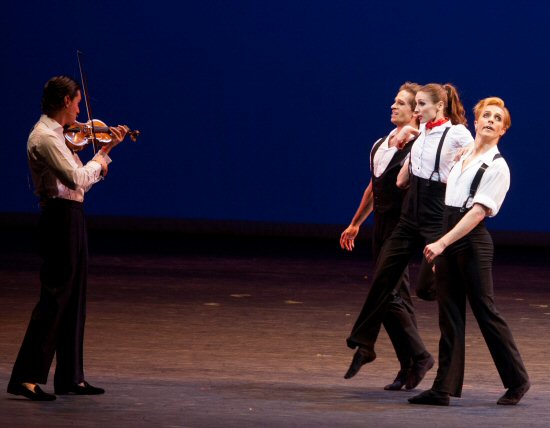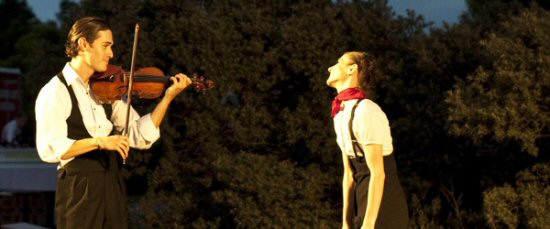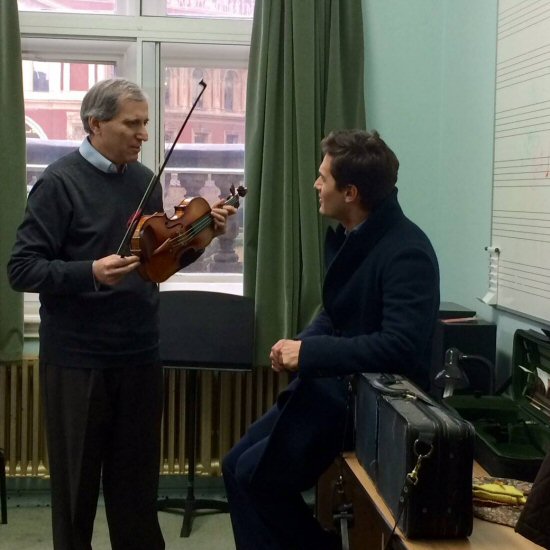An Unlikely Enigma
He has a point, I think to myself – and besides, it’s hardly his fault that he still has all his teeth, or that he lacks Paganini’s sufferances. What he has, in droves, is talent, creativity and raw, unfettered enthusiasm. ‘I just loved the sound of the violin from when I first heard it as a young child,’ he says, explaining how he came to pick up the instrument in the first place, ‘My mum always used to play classical radio in the car, and the Beethoven Violin Concerto really resonated with me.’
After a music therapist tested Siem on a variety of instruments and confirmed his natural proclivity for the violin, the youngster immediately embarked upon the Suzuki method of learning - and, hating that, soon abandoned it for study at the Guildhall School of Music & Drama. By age 10, he was already practicing for around two hours a day. ‘I loved it,’ he says. ‘I enjoyed the physical relationship with the instrument, but I also loved the repertoire and I became more and more fascinated by it. There was almost a mystical element to the whole violin world, looking back at its birth and these weird people who picked it up and developed it, like Corelli and Locatelli, and Tartini and his Devil’s Trill. For me, it was amazing, a complete fantasy world.’
It was that ‘theatrical element’ – the spectacle – that entranced him the most. ‘If you look at a lot of the concerts of Paganini and Bull, they were very aware of the atmosphere. There weren’t any recordings in those days so it was all about how they could captivate the audience. And they would do all sorts of strange things. Bull would even pay actors to come to his shows and faint when he came on stage.’
The zeal with which Siem embraced the violin was a surprise to many, not least because his gene pool was far from auspicious: Bull’s 19th-century input aside, there were no musicians on either side of his family as far back as Siem can remember. Yet some stray chromosomes must’ve been lurking at the periphery, as he is not the only musician of his generation – his older sister, Sasha, is a professional composer and last year won the British Composer Award for choral music. There was never a seminal moment when he realised he wanted a career as a violinist, Siem says; he just never considered he would do anything else, Such single-minded devotion helped him convince Eton College to take him on with a reduced academic schedule so that he could travel to London to study with his teacher, Itzhak Rashkovsky, twice a week – an experience he describes as ‘fantastic, really amazing’.
Siem was, by his own admission, introverted and relatively anti-social throughout his school life, preferring the company of his older friends – Wieniawski, Bruckner, Bach – to that of his peers.
‘I certainly used the violin as an excuse not to be sociable,’ he admits. ‘To be honest, if I didn’t have the violin, I would have found something else to avoid being sociable because I am not naturally like that. I was preoccupied with playing the violin.’ Even now, with a growing fan base and a critically acclaimed album to his name, Siem remains in something of a shell. As he has gotten older his confidence has grown, he says, but he still has few friends and rarely ventures out on the town. ‘But I’m happy with that,’ he stresses. ‘I have other things that are important to me.’
There is a kind of strength and assuredness to his insularity. His clipped vowels are deep and authoritative, bristling with conviction and intelligence. He clearly has a curious mind and a thirst for knowledge, Encyclopaedic facts about music – its history, practitioners, mythologies, mysteries – tumble forth in his answers, and his fascination with the art form is as analytical as it is visceral and instinctive.
Siem’s social life may have suffered due to his art, but his academic life never faltered; after achieving three A’s at A level in French, art history and music, he won a place at Girton College, Cambridge, which he chose over the music conservatoires to avoid becoming simply ‘some narrow-minded musician who was only doing one thing’. Following a gap year, in which he shadowed violinist Shlomo Mintz, a childhood idol he first met in Israel aged 11, Siem set about completing the ‘broad-based education’ he began at Eton.
‘The knowledge that all these guys at Cambridge had was incredible, far greater than so many of the performing artists that I’d come across studying the violin beforehand,’ he says. ‘So it was a real privilege to go there and be surrounded by these kinds of people and see music in a different way.’
Siem’s chosen course of academia proved to be no dampener on his progress as a performing musician. Alongside his degree, he toured, played concerts, released an album and got involved in all manner of weird and wonderful endeavours – including being photographed by Bryan Adams for Italian Vogue and headhunted by Vivienne Westwood for a charity catwalk collaboration.
The Westwood project involved Siem and two dancers from the Royal Ballet performing a piece called Alchemy at the Banqueting House, Whitehall, as part of a fashion show for the NSPCC. Dressed in a striking Westwood creation of gold and red sequinned breeches, Siem played the music he’d composed and – by all accounts – wowed the audience with the energy and dynamism of his performance.
Another Royal Ballet commission quickly followed and saw Siem working with principal dancer Johan Kobborg, first at the Linbury Theatre, London and then later in Havana, Cuba. Called Les Lutins, after Antonio Bazzini’s La Ronde de Lutins, the piece had Siem playing Bazzini and Wieniawski by the side of the stage alongside two Royal Ballet dancers fighting over a girl, before the violinist craftily managed to snare her for himself. It was the visual drama of the show that appealed most to Siem. ‘It was fun and different as I had a role on the stage, not just doing the music. Offstage seemed to me a little boring, but this seemed like much more of a challenge.’


